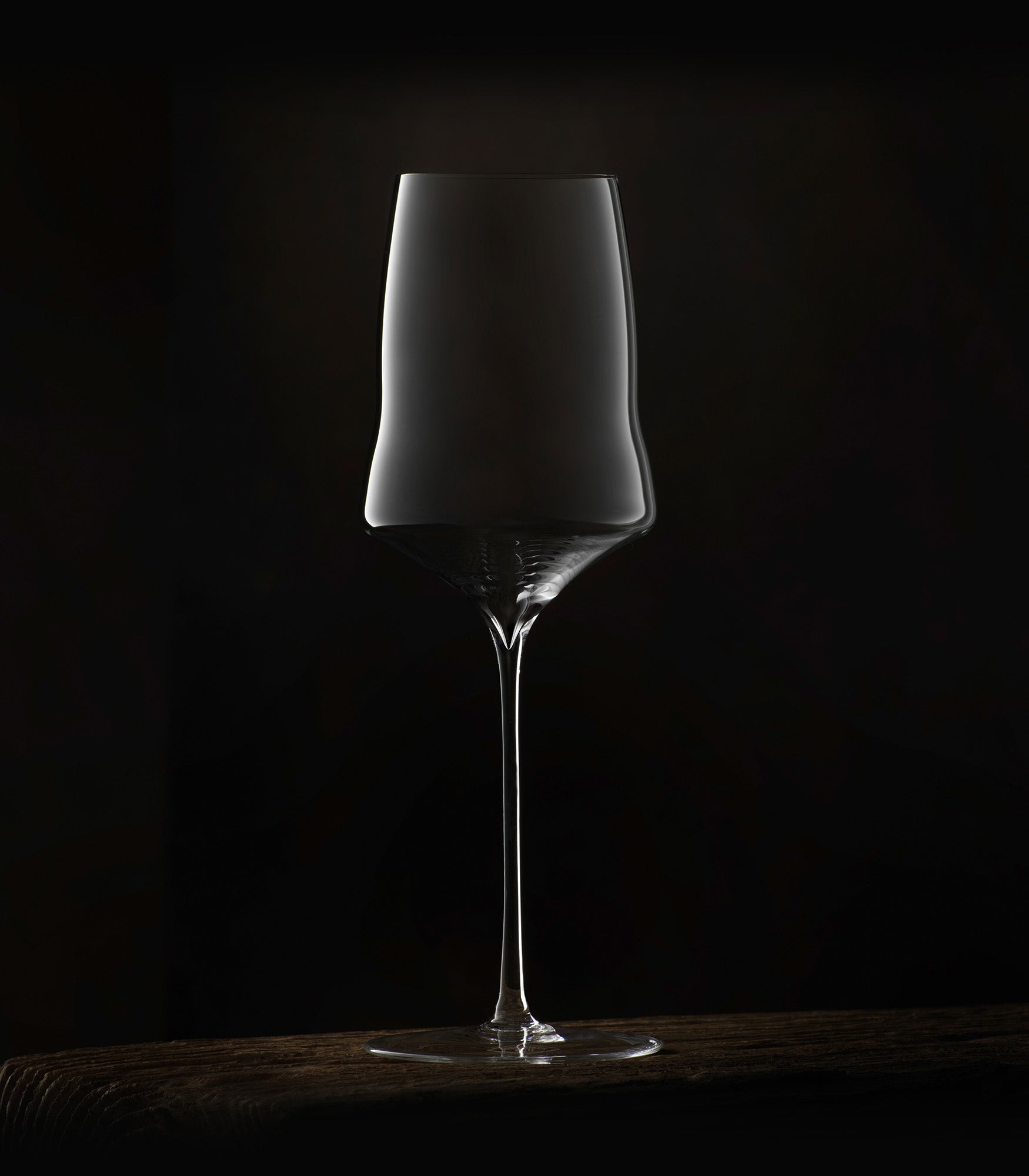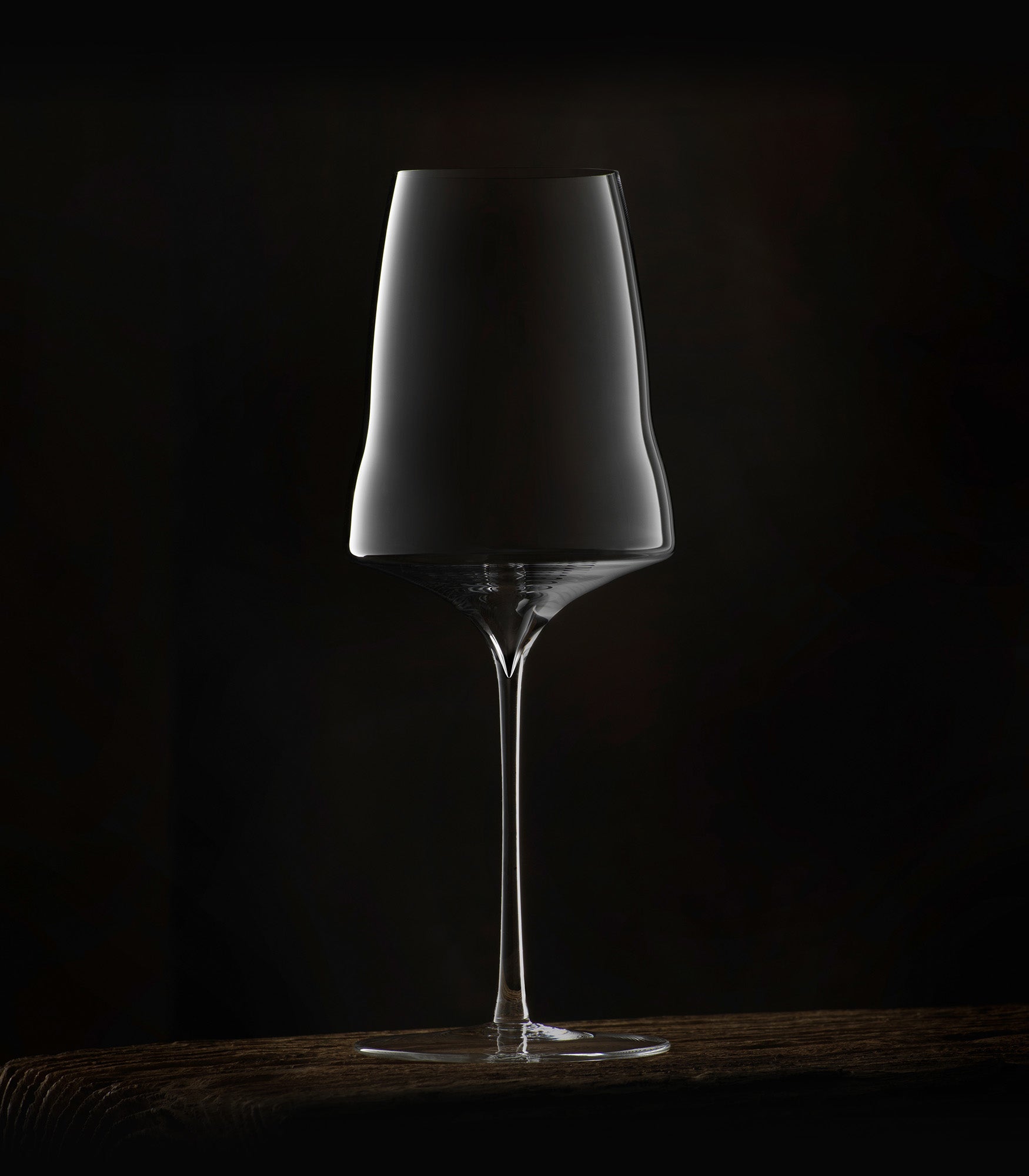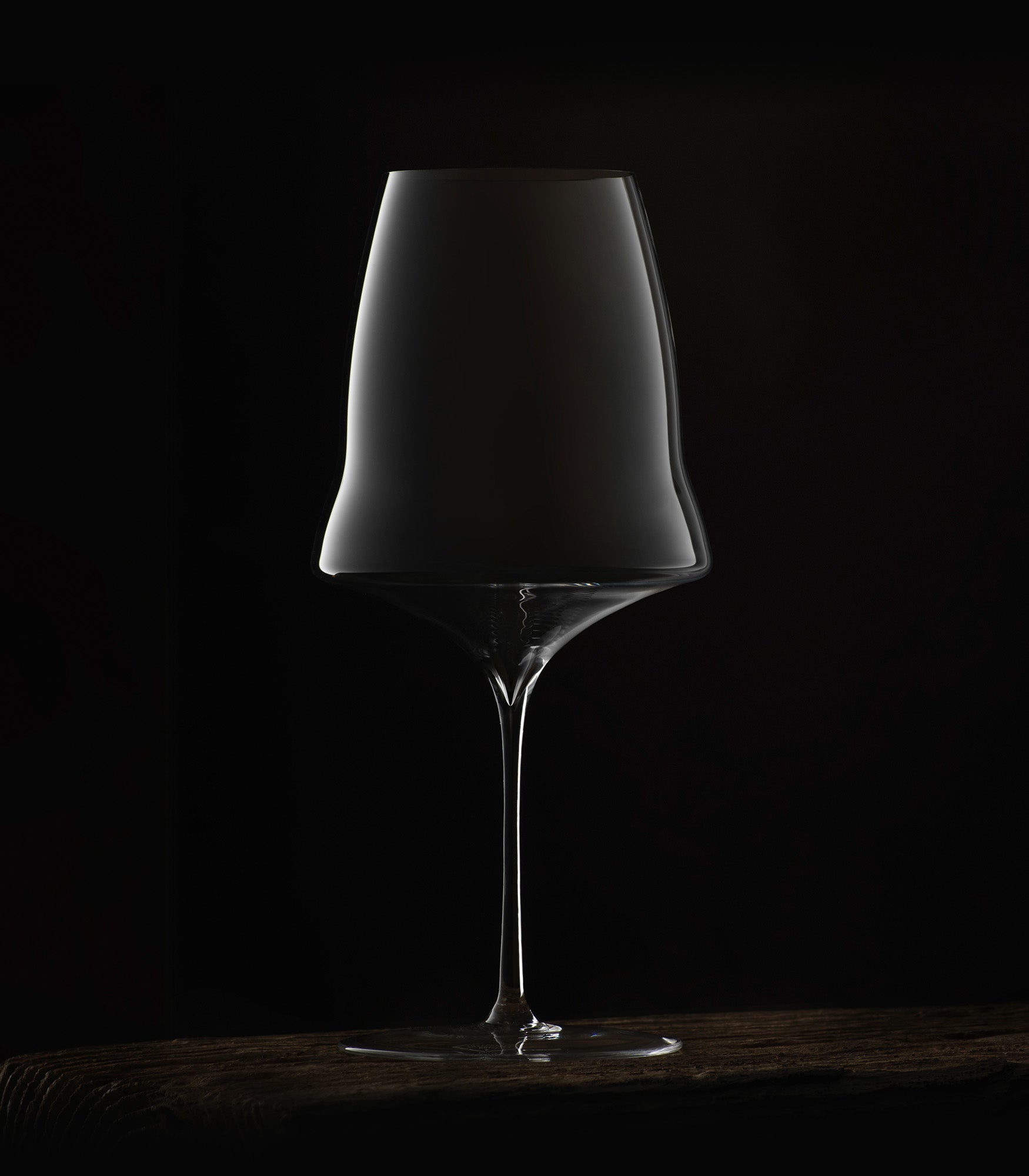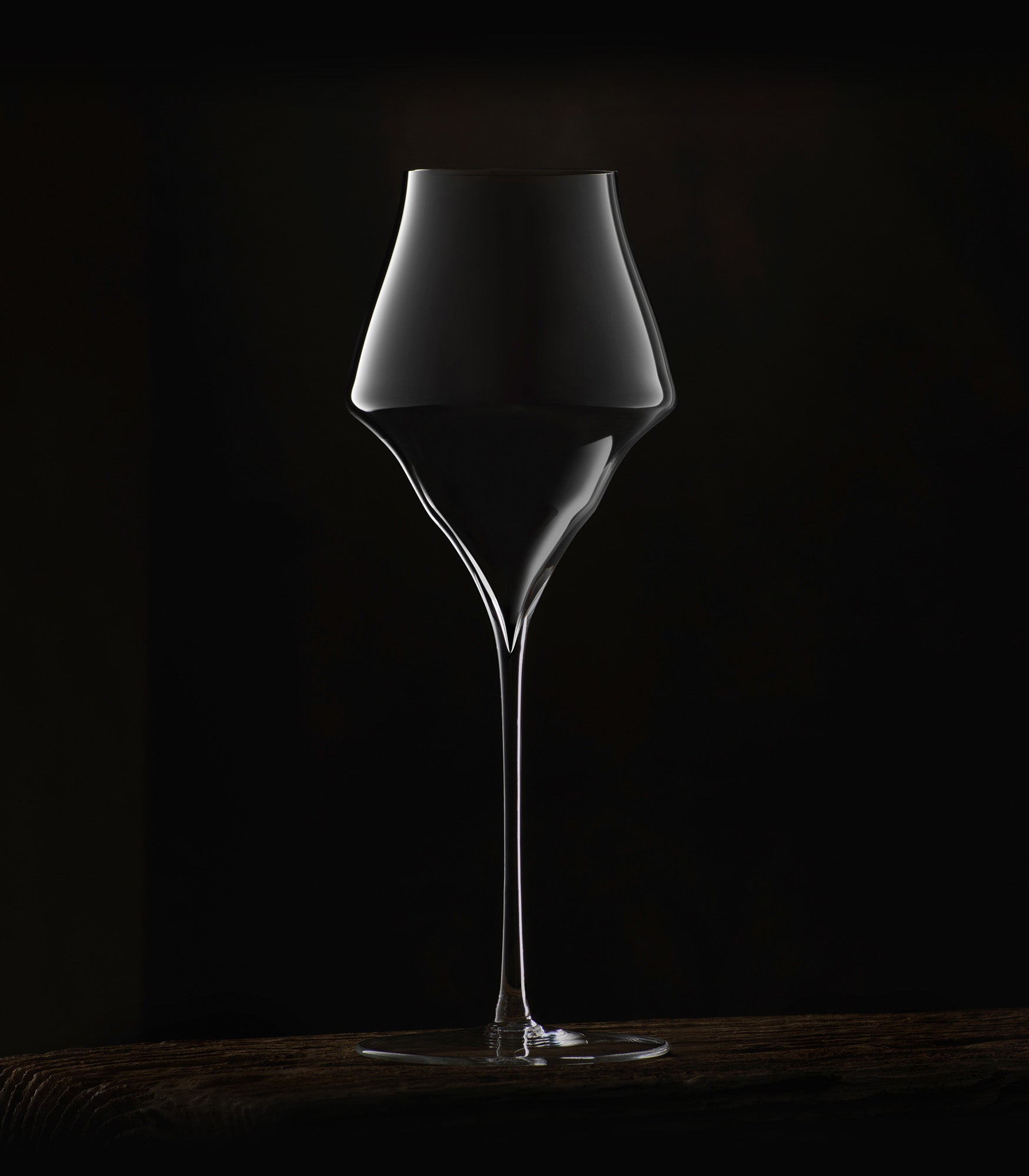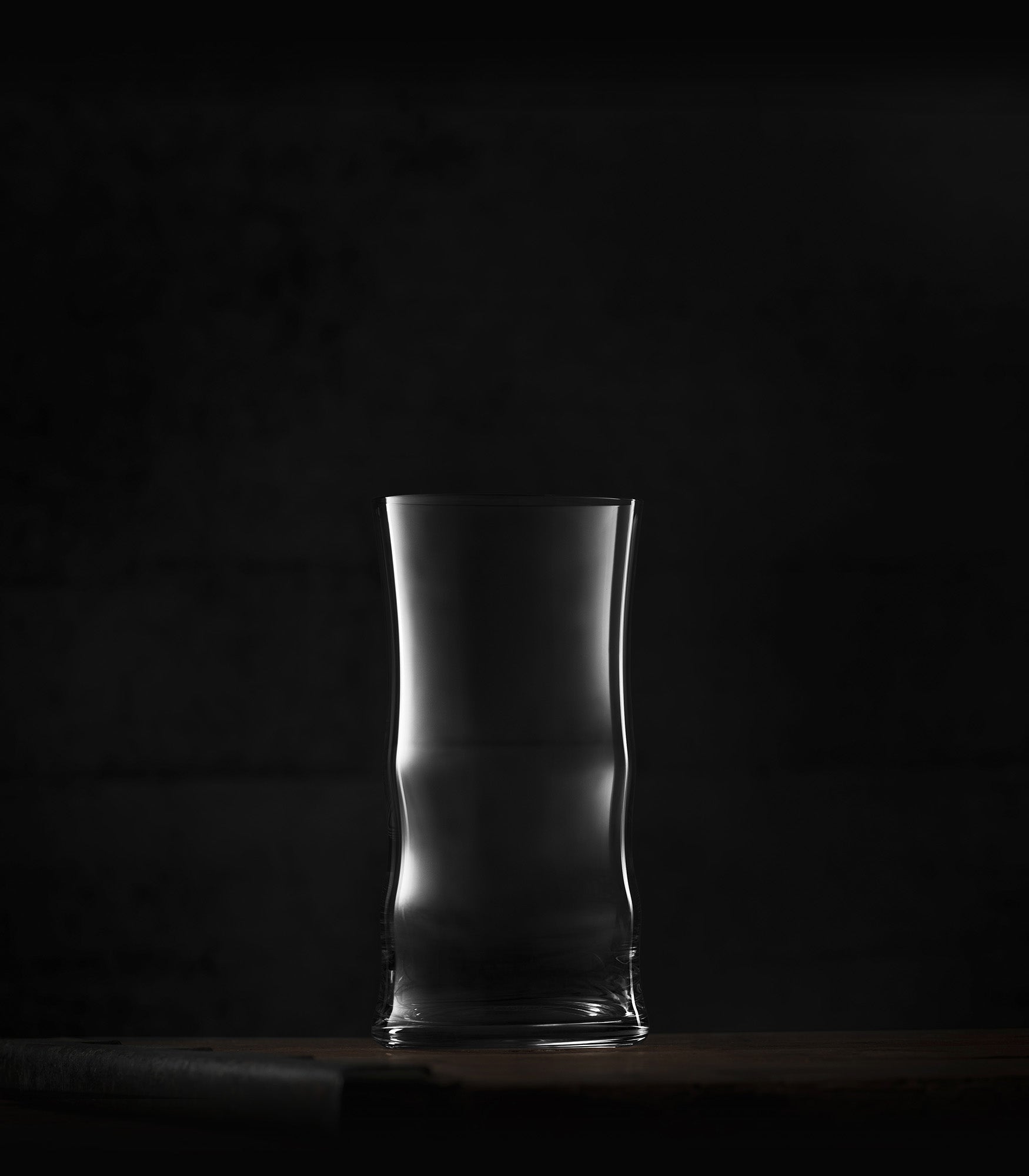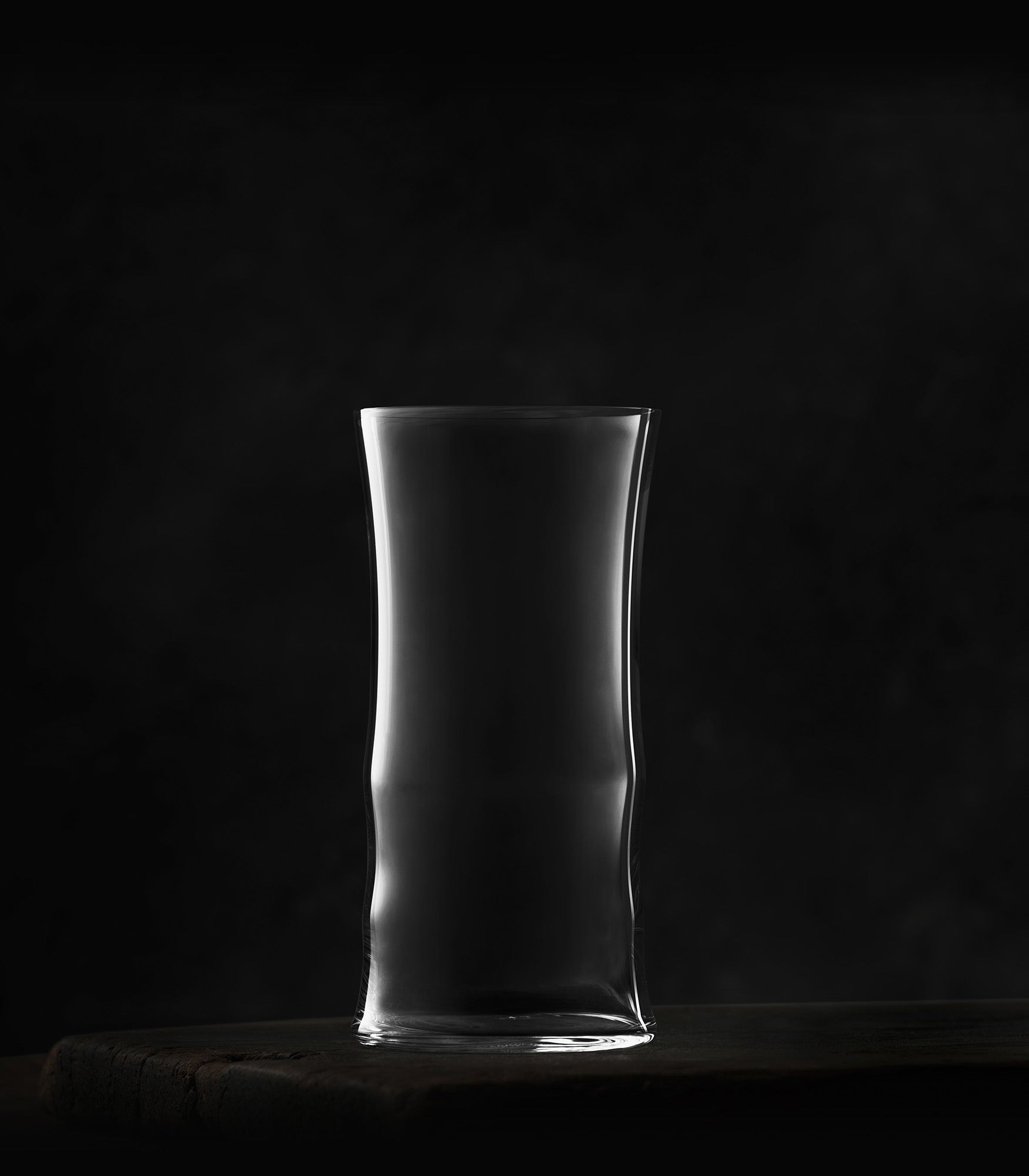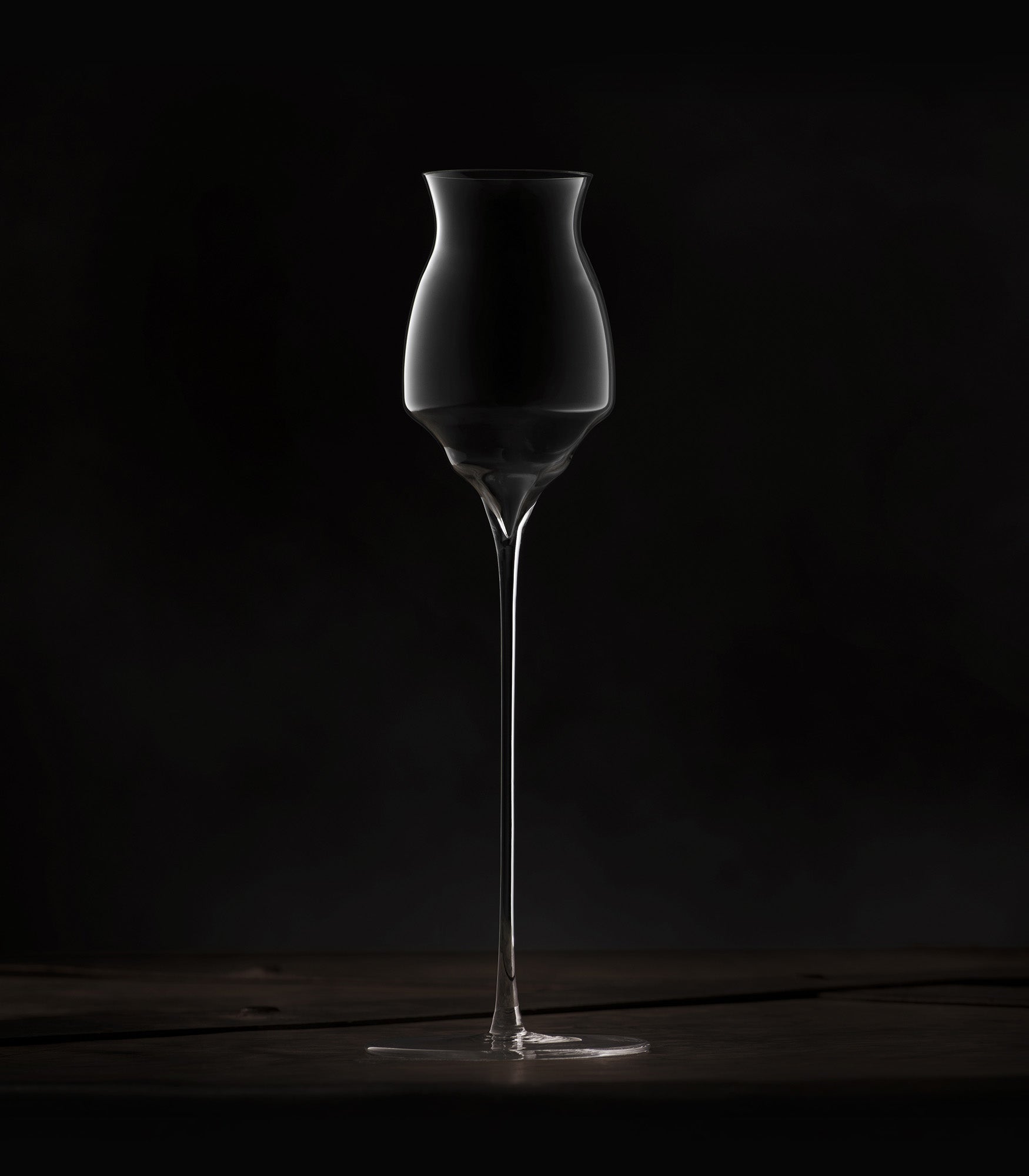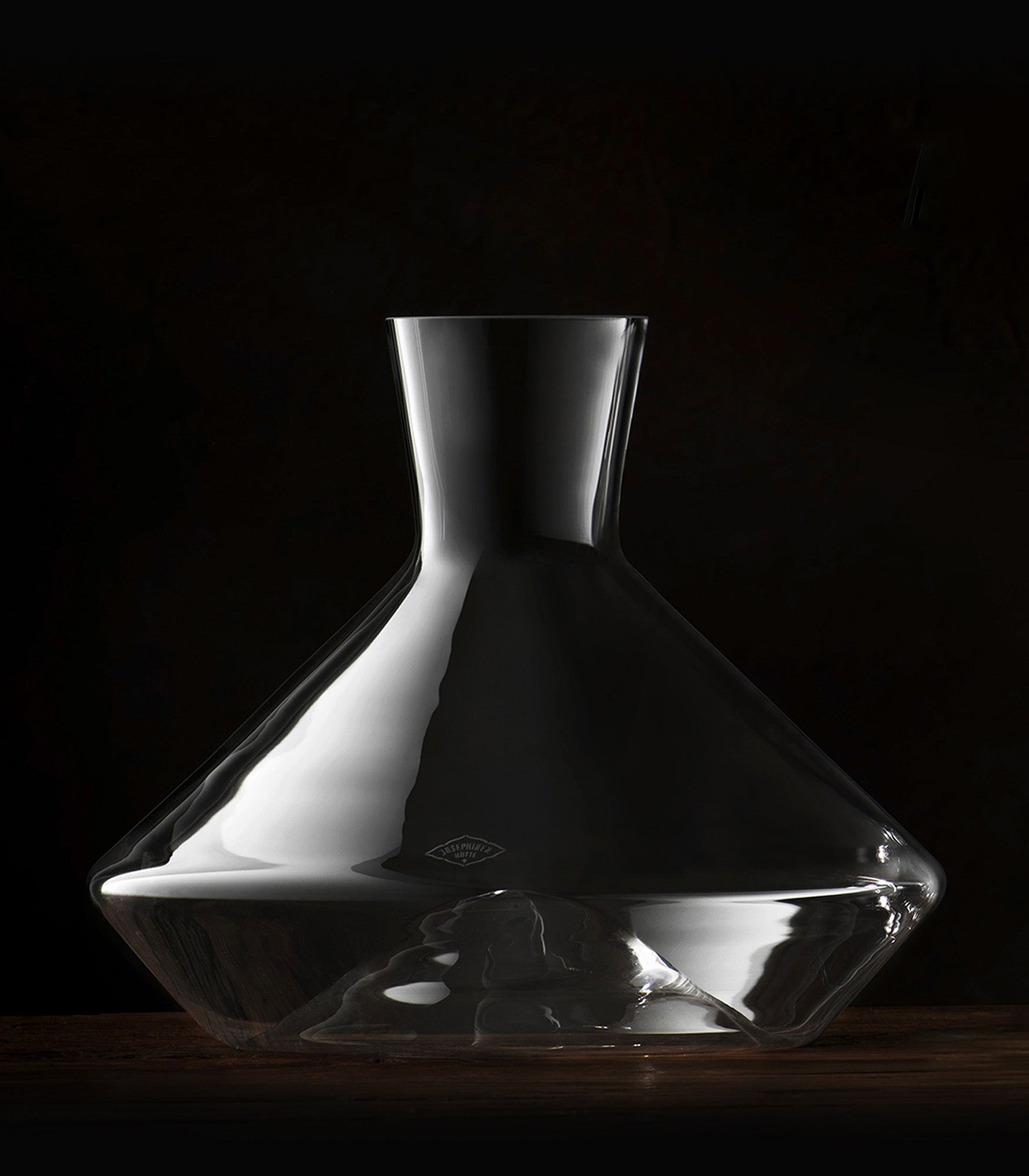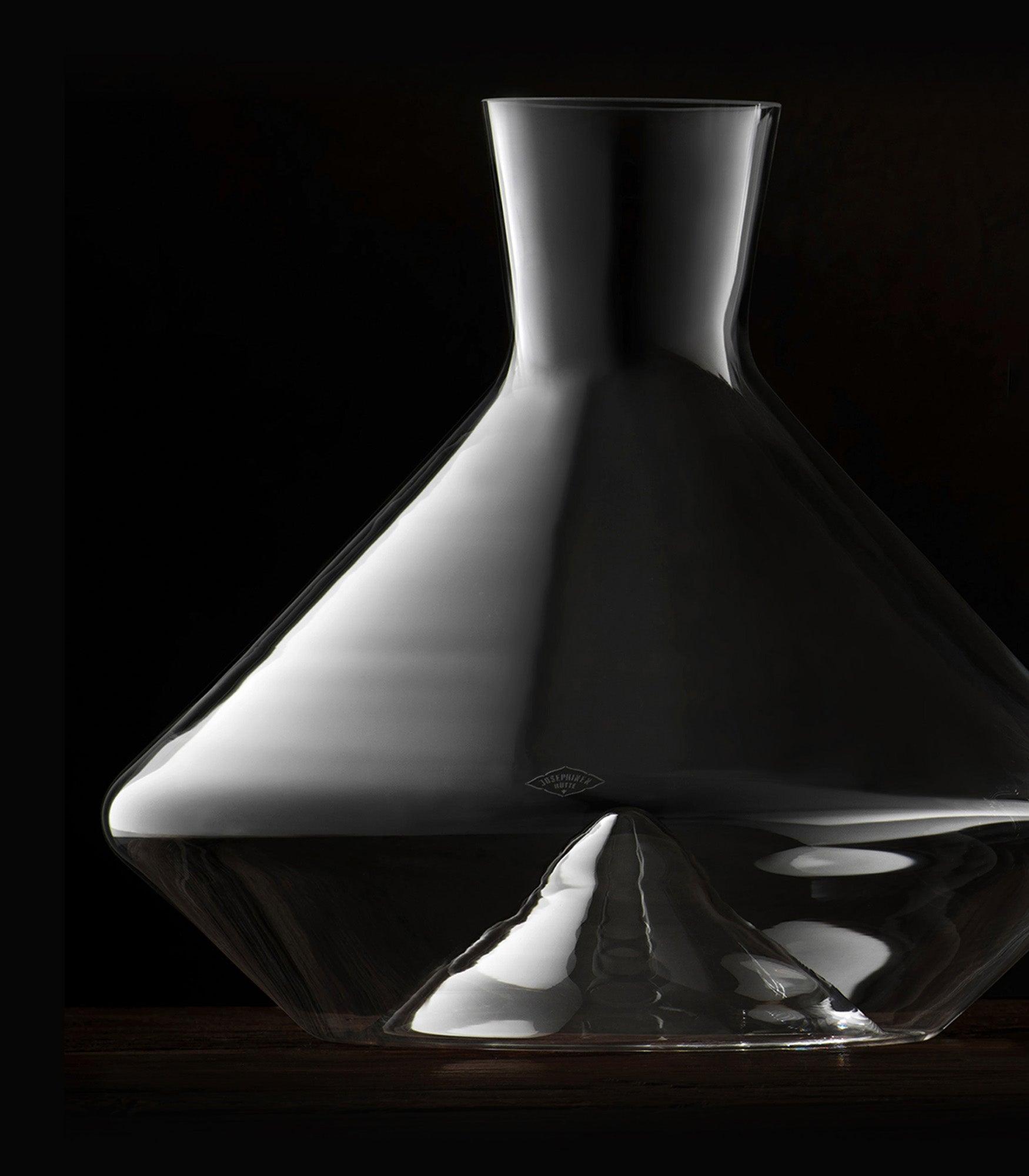Our care instructions
The Josephine glasses are handmade according to the old craftsmanship and are mouth blown. This makes them extremely delicate – an important aspect that enhances the best possible sensory experience – but still very elastic and thus more robust than they look. So there’s no need to worry about handling them, even when cleaning them.

The well-known American sommelier André Hueston Mack has discovered the Josephine for his leading restaurant, and also uses our glasses in his Bon Appétit Show, which has been clicked on millions of times. Here, he demonstrates how to clean the Josephine in the kitchen of his Brooklyn wine bar, “& Sons Ham Bar.”
For more insights on how to best care for your glasses, we have gathered a few tips for you.
Care Tips
Clean the glass by hand with lukewarm water and only if necessary, with a few drops of mild detergent.
Please never hold the glass by the base or only by the stem, but cradle the goblet in your hand with stem between the index and middle finger. Use a sponge or glass brush if necessary.
If you do use washing-up liquid, please make sure that all residue has been washed from the Josephine.
Yes, but only if your dishwasher is suitable for glass and you comply with the following guidelines:
- Your dishwasher must be absolutely clean and free of grease
- It is regularly serviced according to the manufacturer's instructions
- It is correctly adjusted to the local water hardness
- Only detergents and rinse aid from a quality manufacturer are used
- The glasses are well fixed and do not touch each other
- The rinse program has a temperature not exceeding 60° Celsius
- After the rinsing process, the flap of the dishwasher is opened immediately to let the hot steam escape.
Ideally use a large clean linen cloth, this should be used exclusively for polishing your glasses and should be washed several times before the first use.
Using one end of the cloth, hold the glass securely by the goblet, the other end is used to polish the glass. You can also use two cloths.
Start with the inside of the glass, then the rim and lastly with the outer side. When polishing, avoid the typical rotation of the base plate and goblet in opposite directions.
Finally, polish the stem and base plate.
The linen cloth should be washed without fabric softener and not put in the dryer; this will close the fine pores.
Any last remaining droplets of water at the base of the goblet can be soaked up wonderfully with a natural fibre watercolour brush, such a brush can be bought together with the polishing cloth as a care set from our shop.
Please use it exclusively for your glasses.
The Josephine feels most comfortable in a safe, clean, dust-free environment; ideally in a closed glass cabinet. It is important that the cabinet does not give off any odours, as the fine pores of the glass would absorb the odour.
In the cupboard, the glass should always stand upright, but can also be hung upside down on a wine glass shelf.
Just make sure that you rinse the Josephine before use to remove dust and any odours.
Decanters and Carafe
To clean your Josephine decanter or carafe properly, we recommend that you rinse it thoroughly after each use, first with hot and then with cold water, and leave it to drain upside down on a stand.
If small residues remain, they can be removed with a long, flexible sponge brush and hot water. If the brush reaches all the spots, the use of detergents can be avoided. To remove residue from hard-to-reach areas, we recommend our cleaning pearls.
In principle, the dishwasher is also possible, provided the decanter or carafe stands securely and a glass-only programme is used. A soft linen cloth is ideal for polishing your carafe.
Simply pour a glass of cold tap water into the decanter or carafe, add the reusable cleaning pearls and swirl both vigorously until all deposits are dissolved.
After cleaning, pour the pearls and the water through a fine sieve or the enclosed storage bag over the sink, and then spread out the pearls on a clean kitchen towel to dry. It is advisable to fold the edge of the kitchen towel so that the cleaning pearls do not roll off.
Let the storage bag dry as well, after which the cleaning pearls can be put back in the jar. If stubborn limescale residue or dirt remains, simply repeat the cleaning process adding a drop of vinegar or lemon juice. This way your decanters and carafes will always remain brilliant!
